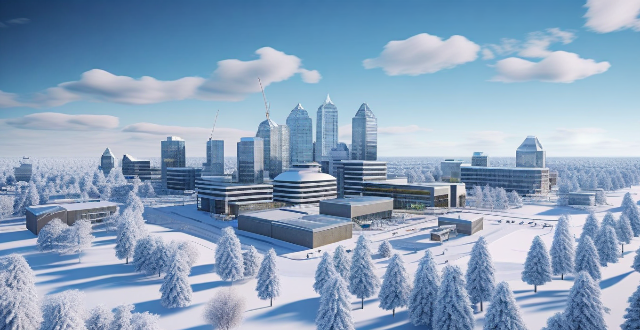The article explores the cost implications of ecological design compared to traditional design methods. It acknowledges that ecological design, which emphasizes energy efficiency and sustainability, often comes with higher upfront costs due to factors such as more expensive materials and specialized labor requirements. However, it argues that these initial expenses can be offset by long-term benefits like reduced energy and water bills, lower maintenance costs, improved indoor air quality, and increased property value. The article uses an example of an energy-efficient building to illustrate how the cumulative savings from these benefits can outweigh the initial additional costs over time. In conclusion, while acknowledging the higher upfront costs, the article asserts that ecological design is more cost-effective in the long run and represents a wise investment for both homeowners and developers.

Is Ecological Design More Expensive Than Traditional Design Methods?
Ecological design, also known as sustainable or green design, is a process that aims to minimize the negative impact of buildings on the environment. It involves using materials and technologies that are energy-efficient, water-saving, and have low emissions. While ecological design may have higher upfront costs compared to traditional design methods, it can be more cost-effective in the long run.
Upfront Costs
The initial cost of ecological design is generally higher than traditional design methods due to the following factors:
- Higher material costs: Sustainable materials and technologies often come at a premium price.
- Additional labor requirements: Ecological design may require specialized skills and expertise, which can increase labor costs.
- Research and development: Investing in research and development for innovative solutions can add to the overall cost.
However, these upfront costs should be weighed against the potential long-term benefits and savings.
Long-Term Cost-Effectiveness
In the long term, ecological design can be more cost-effective than traditional design methods due to the following reasons:
- Energy efficiency: Buildings designed with energy-efficient systems can significantly reduce utility bills over time.
- Water conservation: Water-saving features such as low-flow fixtures and rainwater harvesting systems can lead to long-term water savings.
- Maintenance and operational costs: Sustainable materials and technologies often require less maintenance and have longer lifespans, reducing overall maintenance and operational costs.
- Healthier indoor environments: Ecological design promotes healthier indoor environments by using non-toxic materials and improving air quality, which can lead to reduced healthcare costs and increased productivity.
- Resale value: Green buildings often have higher resale values due to their energy efficiency and sustainability features.
To illustrate the long-term cost-effectiveness of ecological design, let's consider an example:
Example: Energy-Efficient Building
Imagine a commercial building designed with energy-efficient systems, such as high-performance insulation, advanced heating and cooling systems, and solar panels. The upfront costs for this building might be 20% higher than a traditionally designed building. However, the energy savings from these systems could result in a 40% reduction in utility bills over the lifetime of the building. Over a period of 20 years, the cumulative savings from reduced energy consumption could far outweigh the initial additional costs.
Moreover, if we factor in other benefits like reduced maintenance costs, improved indoor air quality, and increased property value, the overall cost-effectiveness of ecological design becomes even more apparent.
Conclusion
While ecological design may have higher upfront costs compared to traditional design methods, it offers numerous long-term benefits that can make it more cost-effective in the end. By investing in sustainable materials and technologies, buildings can achieve significant savings in energy consumption, water usage, maintenance costs, and healthcare expenses. Additionally, green buildings often provide healthier living environments and have higher resale values. Therefore, when considering the overall lifecycle costs and benefits, ecological design proves to be a wise investment for both homeowners and developers alike.